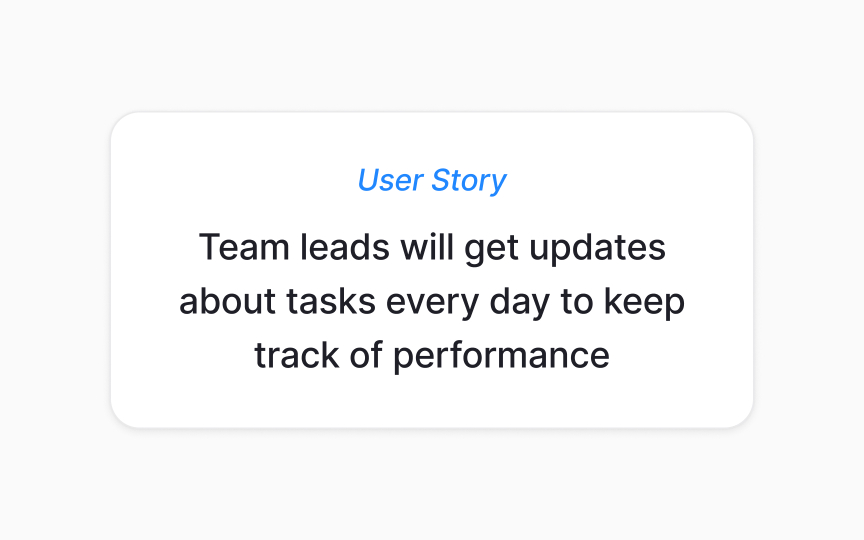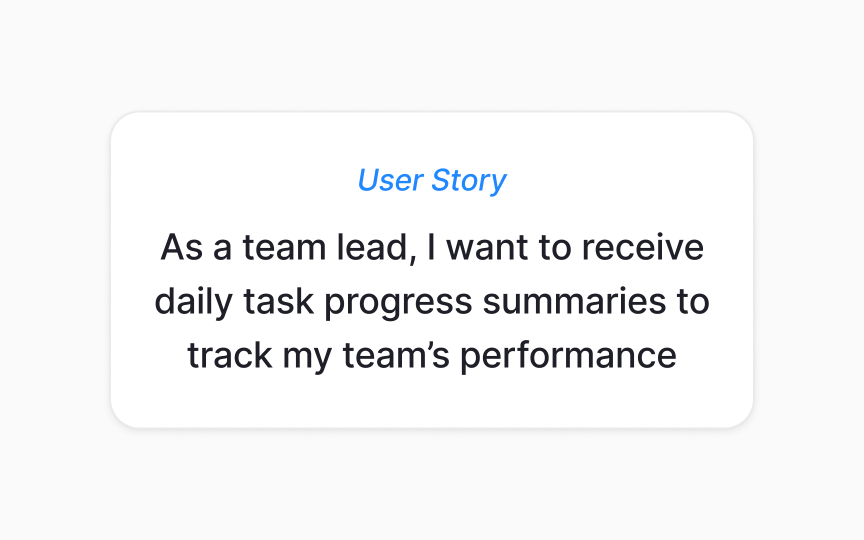User story generation
User stories translate features into human needs. They shift focus from "what to build" to "why it matters." Good stories create empathy and guide development decisions. The classic format remains powerful: "As a [user type], I want [functionality] so that [benefit]." This structure forces you to think about who uses your product and why. Each element matters for creating meaningful features.
ChatGPT can generate diverse user stories from basic feature ideas. Provide context about your users, their jobs-to-be-done, and current pain points. Ask for variations that consider different user segments and edge cases. Try this prompt: "We're building a task management app for remote teams. Generate 5 user stories for a notification system, considering different roles like team leads, contributors, and project managers."
Remember that user stories are conversation starters, not contracts. They should be small enough to complete in one sprint but meaningful enough to deliver value. Break down large stories into smaller, independent pieces.
Pro Tip: Always write stories from the user's perspective, not the system's. "System sends email" is a task, not a user story.


